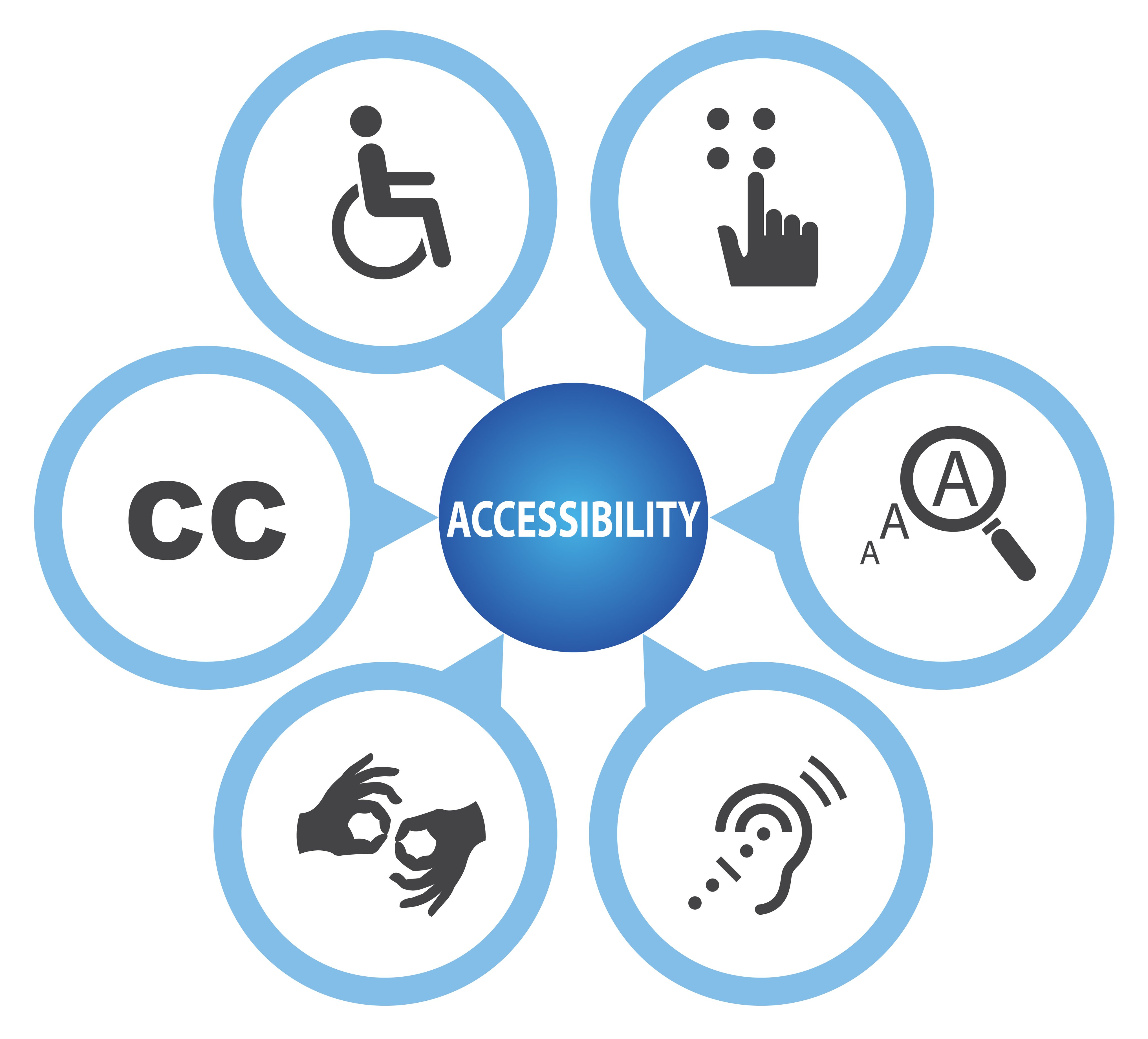
7 Common Misconceptions about Accessibility

Advancing accessibility necessitates dispelling misconceptions and debunking myths. By educating developers and actively involving the disability community, we can make adopting accessibility standards feasible for everyone. Ensuring that websites and apps are accessible to people with disabilities is crucial for creating an inclusive online experience. By addressing and debunking these myths, we can move accessibility efforts in the right direction.
Here are 7 most common misconceptions about Accessibility.

1. Accessibility is Only for Blind People or Severe Disabilities
Misconception: Some believe that accessibility tools are designed exclusively for people who are blind or have severe disabilities.
Reality: The truth is, accessibility has a far-reaching impact that extends beyond this narrow view. Accessibility benefits a wide range of people, including those with temporary injuries, older adults, and even those in challenging situations like bright sunlight or noisy environments.
Accessibility features are essential for a wide range of users, not just a select group. They cater to diverse audiences, including:
Individuals with Temporary Injuries: For instance, someone with a broken arm may rely on voice recognition software to navigate their devices efficiently.
Older Adults: As we age, our abilities change. Larger text and clear audio can significantly enhance the user experience for seniors.
Situational Limitations: In bright sunlight, screen glare can make it hard to read a display. High-contrast modes and screen settings help mitigate this issue.
Environmental Challenges: In noisy environments, captions enable users to follow along with video content without missing out on information.

2. Accessibility Makes Websites Boring
Misconception: Many people mistakenly believe that accessible websites are monotonous, text-heavy pages devoid of visual flair.
Reality: Modern accessible websites can be vibrant and engaging. Accessibility standards can be met without sacrificing aesthetics, using alternative text for images, captions for videos, and ensuring compatibility with assistive technologies.
In the realm of web design, accessibility and aesthetics are harmonious allies. Designers who embed alternative text for images bolster accessibility while preserving visual appeal. Captions and transcripts extend beyond aiding the deaf and hard of hearing; they also support language learners and those in bustling environments. A palette of bold, vibrant colors can be chosen to enhance color contrast without compromising usability. Typography, too, is a critical element where thoughtful design can amplify both aesthetics and readability. Interactive elements like buttons, links, and forms can be crafted to be both visually enticing and accessible.

3. Color Blindness Isn’t a Significant Concern
Misconception: Color Blindness is insignificant. Some don’t consider it a real disability.
Reality: Color blindness affects a significant portion of the population and can make it difficult to distinguish colors, see contrast, and perceive images accurately. Color blindness is far from trivial.
Approximately 8% of men and 0.5% of women worldwide experience some form of color blindness. This condition arises due to genetic variations that affect the perception of specific wavelengths of light.
Types of Color Blindness:
The most common type is red-green color blindness, where individuals struggle to differentiate between red and green hues. Protanopia (lack of red cones) and deuteranopia (lack of green cones) are the primary forms of red-green color blindness. Tritanopia (blue-yellow color blindness) is less common but still significant. This can lead to misreading or confusion for a person who is color blind to navigate color dependent graphs, websites, and even traffic signs.

4. Accessibility is Expensive
Misconception: There’s a belief that achieving accessibility standards is costly and blows budgets.
Reality: The reality is that accessibility can be quite cost-effective, especially when it is integrated into the design process from the beginning, but there are many ways to get your websites up to speed.
Ensuring that websites and apps are accessible to people with disabilities isn’t just a best practice—it’s a legal requirement. Small businesses, just like large corporations, need to prioritize accessibility. By integrating it early in the design process, organizations save costs and demonstrate social responsibility. Compliance isn’t an expense; it’s an investment in inclusivity. Moreover, accessible design opens doors to a broader audience, potentially increasing customer satisfaction, sales, and overall profitability. In the digital landscape, accessibility isn’t a one-time checkbox; it’s an ongoing commitment that benefits everyone.
5. Only Large Companies Need to Worry About Accessibility
Misconception: Small businesses often think that accessibility is a concern only for large corporations.
Reality: Accessibility is a legal requirement in many countries, and businesses of all sizes need to comply with disability discrimination laws.
In numerous countries, legal frameworks—such as the Americans with Disabilities Act (ADA) in the U.S. and the Equality Act 2010 in the U.K., and now the new Title II rule—impose clear obligations on businesses. These laws underscore that accessibility is not a choice but a necessity to prevent discrimination against individuals with disabilities. Importantly, the need for accessibility transcends business size. Whether a local bakery or a multinational corporation, fostering inclusive relationships with customers remains paramount.

6. Accessibility is a One-Time Project
Misconception: It’s a common belief that accessibility is a checkbox item—a one-off project that can be completed and then forgotten.
Reality: Accessibility is an ongoing process. As technology and standards evolve, so must accessibility efforts.
Accessibility is a dynamic journey, not a static achievement. As technology progresses, introducing new devices and software, accessibility must evolve to meet emerging challenges and opportunities. Keeping pace with updates to standards like WCAG is crucial for maintaining effective and compliant accessibility practices. User feedback is invaluable, providing insights that drive continuous improvement, while content updates necessitate regular accessibility checks to ensure new features are inclusive.

7. Automated Tools Can Fully Address Accessibility
Misconception: There’s a belief that automated tools alone can ensure full accessibility compliance.
Reality: Disabilities are human conditions that often require human judgment to resolve potential problems. Automated tools play a crucial role, but they cannot replace the nuanced understanding and judgment of human experts.
While automated tools are adept at detecting straightforward accessibility issues like missing alternative text or broken links, they often overlook the nuanced, context-dependent aspects such as content clarity and the logical sequencing of interactive elements. These tools can also misidentify issues, producing false positives and negatives, which necessitates human expertise for accurate validation and interpretation. The complexity of web interactions, including dynamic content and advanced accessibility roles, often eludes automated detection, requiring human discernment to ensure cognitive accessibility and a positive user experience. Ultimately, human judgment is indispensable in orchestrating the multifaceted elements of accessibility.
Sources:
https://moz.com/blog/web-accessibility-myths
https://www.unh.edu/diversity-inclusion/accessible/accessibility-101/accessibility-misconceptions
